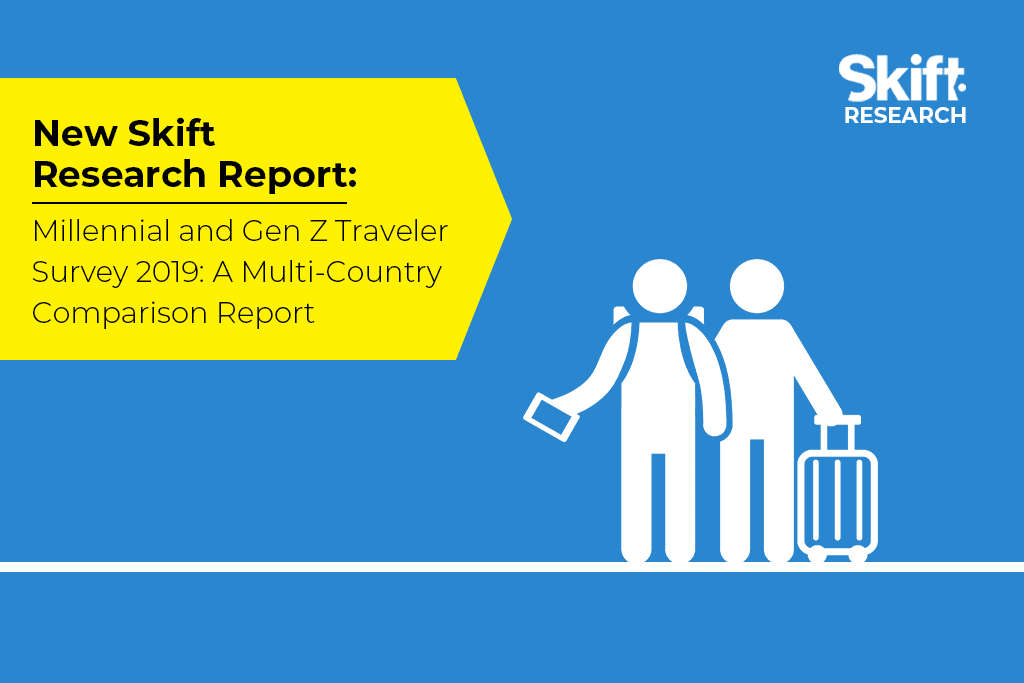Skift Take
Millennials have already been in the travel industry’s spotlight for years, yet they still remain somewhat of a mystery. As they continue to gain spending power, their successor generation, Gen Z, is hot on their heels. Thinking about these generational cohorts as a global collective however, risks painting the picture with too broad a brush.
Even as the oldest millennials near 40 years old, they still loom as a mysterious group to travel brands and marketers looking to win them over. It’s no wonder then, that their successor generation, Gen Z, is nearly an enigma. Both of these generational cohorts are quickly growing in terms of population share and spending power, meaning that understanding them should be top of mind for the travel industry. Grasping how their habits, preferences, and values set each group apart from one another is key to attracting them as customers.
Skift Research dives deep into each of these groups in our latest report, Millennial and Gen Z Traveler Survey 2019: A Multi-Country Comparison Report. We set out on this report with the goal of gaining a clearer picture of how millennials and Gen Zs compare to each other. At the same time, we know that making global claims about generational cohorts risks painting the picture with too broad a brush. So in an effort to fully understand these age groups from a global perspective, we collected survey responses from travelers aged 16 to 38 who reside in five major travel markets around the world: The United States, the United Kingdom, Australia, China, and India.
Featuring over 200 pages of survey results, we believe this is the most comprehensive and data-intensive report on these generations with a global scope. The report begins by comparing millennial and Gen Z travelers across the five countries to spotlight larger regional trends. We then dive deeper into each country one by one, slicing highlights from the data by four finer-tuned age groups: Young Gen Z (16–18 year olds), Old Gen Z (19–22), young millennials (23–30), and old millennials (31–38). The report ends with a look at a few key areas where these four age groups differ from one another the most across the five countries, highlighting where generational cohort differences are consistent and inconsistent across the globe.
What You’ll Learn From This Report:
- How millennial/Gen Z travelers compare to each other in the U.S., UK, Australia, China, and India, including:
- Their trip incidence
- Their biggest motivators for travel
- The most important destination characteristics to them
- Travel planning behavior, including what websites and devices are preferred
- Air travel, accommodation, and activity booking behavior, including preferred booking methods and devices used
- How they view spending on travel, including their spending responsibility and priorities
- Participation and interest in travel loyalty programs
- Online behavior, including the most popular social media platforms
- How important sustainability is to them
- Participation rates in types of trips like cruise and wellness trips
- Interest in certain travel activities like adventure experiences and shopping
- Use of alternative accommodations and ridesharing services while traveling
- How Young Gen Z, Old Gen Z, young millennial, and old millennial travelers compare to each other within each country, including:
- The types of trips they prefer
- Trip planning preferences and behaviors
- Spending priorities
- Participation in loyalty programs
- Top social media platforms for each age group and where they follow travel-related accounts or influencers
- Participation in certain travel activities like shopping and trying local foods
The Daily Newsletter
Our daily coverage of the global travel industry. Written by editors and analysts from across Skift’s brands.
Have a confidential tip for Skift? Get in touch
Tags: consumer insights, gen z, millennials, tourism
